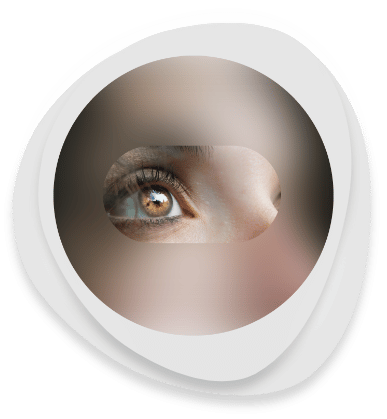May 2023
Imagine taking a clear piece of plastic and leaving it in your backyard for 10 years. Exposed to the UV light of the sun, the plastic over time would become hazy, cloudy, and may change color. A cataract is a type of vision impairment, in which the lens of your eye becomes cloudy and yellowed, most commonly due to your eye’s natural aging process. The process can be hastened if you have a lot of UV light exposure, diabetes, trauma, or take certain medications. This often leads to symptoms like blurry, distorted, or hazy vision, as well as, increased difficulty seeing in low-light conditions and increased sensitivity to glare. While cataracts are a very common eye condition, there are still some misconceptions out there about them. If you’re concerned about developing cataracts, here are some facts vs. fiction you should know.
Eye Drops Help Dissolve Them
- Myth: You can dissolve cataracts with over-the-counter medications like eye drops.
- Fact: Cataracts are not treatable with eye drops or any other non-surgical means. The only way to improve your vision and remove cataracts is through surgery, in which the clouded lens is replaced with a clear artificial one. The FDA has not approved any eye drops for any eye drops for the treatment of cataracts.
Making Cataracts Worse?
- Myth: You will make your cataracts worse by engaging in up-close tasks like reading/sewing.
- Fact: While wearing glasses or corrective lenses can improve your vision, they will not delay the progression of cataracts. Nor will engaging in up-close tasks worsen them. In fact, using your near vision regularly can actually help prevent age-related vision loss in general.
Surgery Is Awful for Cataracts
- Myth: Cataract surgery is painful, dangerous, and has a long recovery time.
- Fact: While cataract surgery does require anesthesia, it’s typically a quick and painless procedure with a short recovery period. Most individuals return to their normal activities within 24 hours, and will notice improved vision within a few days. It’s an extremely safe procedure to undergo, and has high success rates, upwards of 98%.
Don Those Sunglasses
- Myth: Wearing sunglasses will prevent cataracts from forming.
- Fact: Sunglasses can help protect your eyes from UV exposure, which is linked to an increased risk of developing cataracts. However, they cannot completely prevent the development of cataracts, as they are primarily caused by aging and genetics. The best way to prevent cataracts is to maintain a healthy diet, not smoke, and have regular eye exams.
Cataracts: Reversible, Spreading, & Growth
- Myth: You can reverse cataracts after they’ve formed.
- Fact: Once a cataract has formed, the only way to improve your vision is through surgery. However, there are ways to slow down the progression of cataracts and possibly prevent them from forming in the first place. This includes maintaining a healthy diet, avoiding smoking, and wearing protective eyewear when necessary. It’s also important to have regular eye exams to catch any changes in your vision early on and address them promptly.
- Myth: Cataracts can spread from one eye to the other.
- Fact: Cataracts are not contagious, and cannot spread from one eye to the other. It is normal for individuals to develop cataracts in both eyes, but this often happens due to natural aging processes rather than one eye “catching” it from the other. Both eyes share the same genetics and were exposed to the same UV light over a lifetime, it should come as no surprise that cataracts form in both eyes.
- Myth: Once removed, cataracts can “grow back”.
- Fact: Cataracts are not classified as “growths” in your eye, but are a result of the changes in the proteins within the eye’s lens. It is possible to develop a different issue, a posterior capsular opacification or haze in the membrane that holds your new artificial lens implant. Some people mistakenly refer to this as, “a cataract coming back” or a “secondary cataract” but it is infact a different process.This can be caught with regular follow-up appointments after cataract surgery, and can be addressed with a YAG laser capsulotomy. A YAG procedure is painless, takes about 30 seconds, and is usually done only once. It is covered by insurance.
By being informed about the facts vs. fiction surrounding cataracts, you can take the necessary steps to maintain good eye health and address any vision changes promptly. If you have concerns about your vision or think you may be developing cataracts, it’s important to schedule a consultation with an eye doctor. At OVO LASIK + LENS, our team of experienced professionals can provide you with a comprehensive evaluation and discuss your options for cataract surgery. Don’t let cataracts affect your vision any longer – schedule an appointment today.
NEWS + PRESS
Schedule Your Free OVO Lasik
Consultation Today!

We’ll never share your details.






